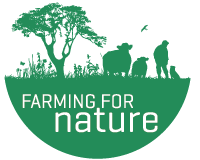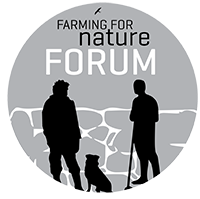Best Practice Guides
VIEW & PRINT AS PEATLAND LEAFLET HERE
Peatland management
Peatlands include a range of habitats including raised bogs, blanket bogs and fens. Most raised bogs have grown from a lake basin and are typically surrounded by agricultural grassland (with very little farming on the bog itself) while blanket bogs tend to be much more extensive and form carpets across flat, or gently undulating, landscapes – these areas are typically grazed with sheep or, in some cases, cattle. Raised bogs generally occur in the Midlands whilst blanket bogs are largely confined to the western half of the country and to mountainous areas further east with high rainfall levels.
Raised bogs generally contain deeper peat deposits (typically between 4 and 8 metres) while blanket bogs are usually shallower with a typical peat depth of between 2 and 5 metres. Over 92% of Ireland’s raised bogs have been lost through drainage, peat harvesting and afforestation, while some of our blanket bogs have been badly eroded as a result of past overgrazing. Finally, fens range from very wet swamps through to calcareous meadows, with some being unsuitable for grazing, whereas others, such as fen meadows, provide grazing opportunities during late summer.
Why should I look after my peatlands?
Agricultural Benefits: Blanket bogs cover many of the uplands of Ireland and are an important habitat for livestock (mainly sheep) if managed sustainably. Over- or under-stocking of these peatlands will deplete the grazing resource and may lead to further damage such as erosion or fire. Healthy peatlands provide a huge range of ‘environmental services’ which, at a time of climate crisis, may attract significant payments from future agri-environment schemes given their importance in storing carbon, managing water and supporting wildlife
Ecological Benefits: Peatlands are one of Ireland’s most valuable ecosystems – they really are amazing in terms of their natural and cultural heritage (lots of important archaeological artefacts are found preserved in bogs, from butter to bodies!). Ireland is lucky to have 8% of the world’s blanket bogs, often forming a mosaic with upland heaths. Bogs provide habitat for a wide range of specialist plants that can survive the extreme conditions – in particular, a wonderful array of heathers, but also featuring ‘insectivorous’ plants (ones that eat insects!). They are also host to a range of wildlife; butterflies, dragonflies and damselflies, lizards and frogs, hares, and a variety of bird life, including many birds of prey. Peatlands also help filter water to keep it clean.
Climate Benefits: When they are in good condition, peatlands act as a major carbon store, trapping climate-damaging greenhouse gases. Peatlands act as a large store of carbon, where it is stored in the form of peat. Peatlands in good condition will continue to accumulate carbon, while degraded or drained peatlands slowly release their store of carbon to the atmosphere. In Ireland, we have lost 80% of our total peatland habitat, releasing millions of tonnes of greenhouse gases in the process. Peatlands cover only 3% of the earth’s surface yet they store at least twice as much carbon as all the earth’s standing forests. Peatlands also act as a critical piece of natural ‘infrastructure’ in defending against flooding as they act as massive natural ‘sponges’ which soak up a lot of water and release it gradually – thus helping adapt to some of the negative impacts of climate change.
What does a well-managed bog look like?
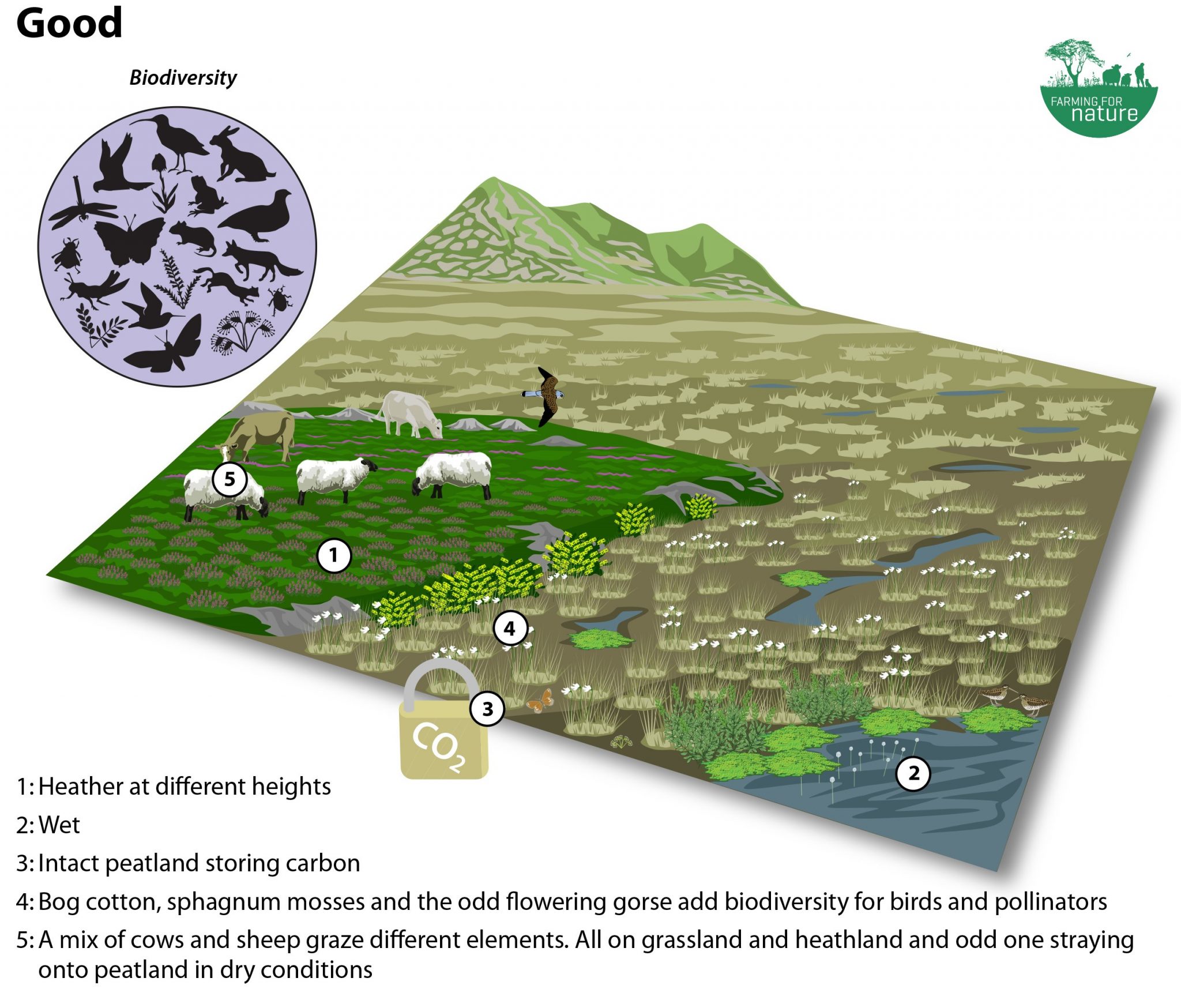
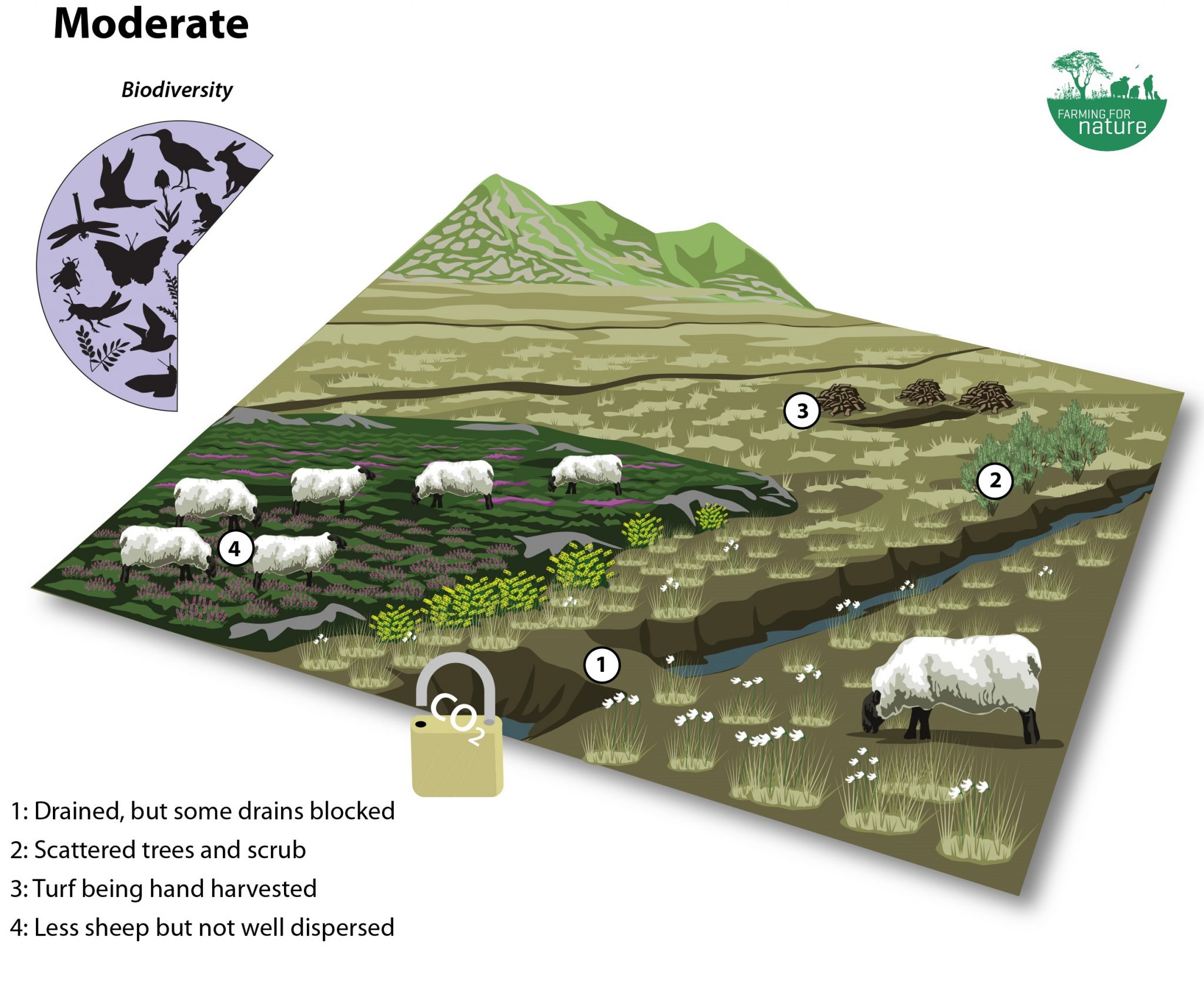
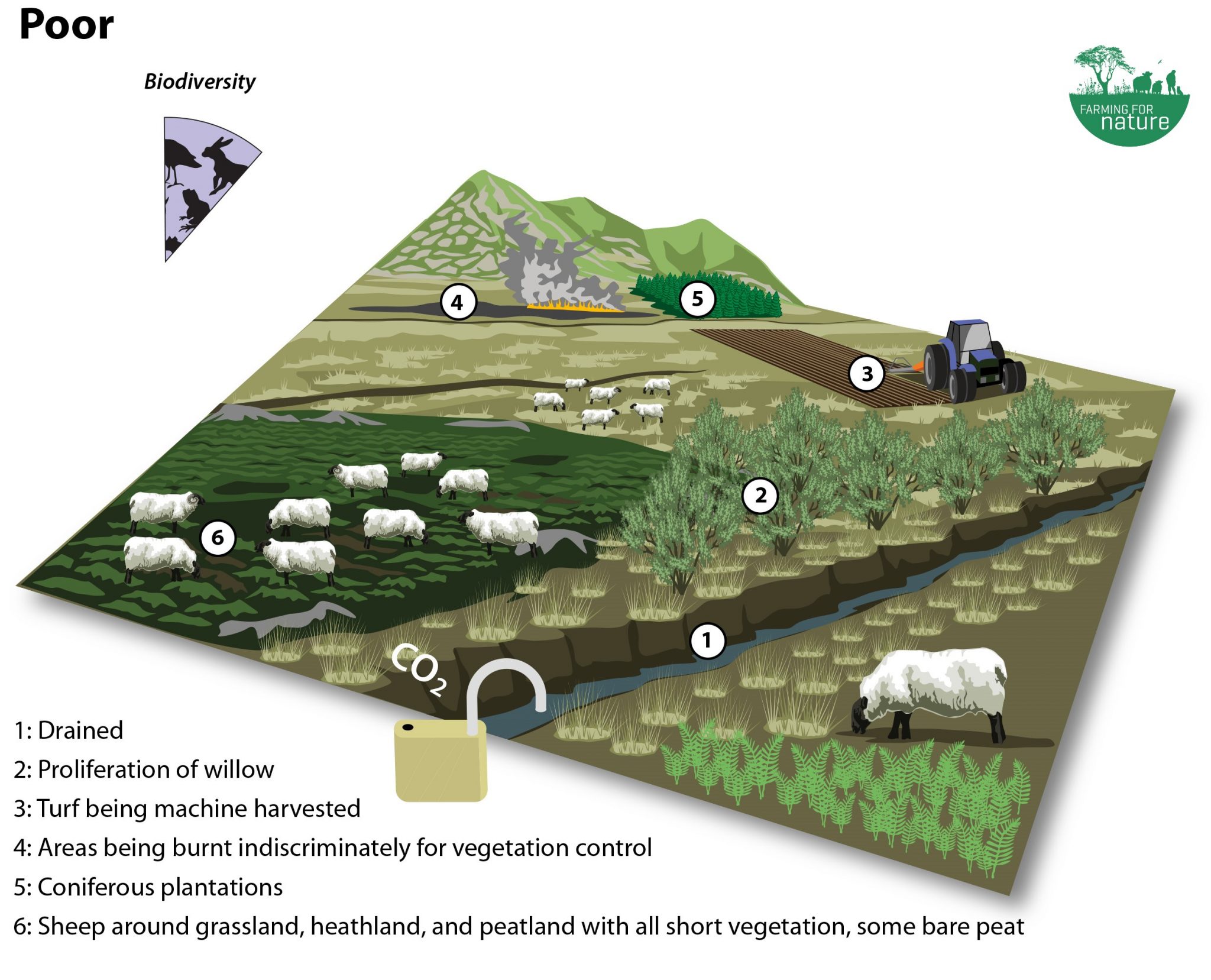
How do I manage my peatlands?
- In a healthy bog, water levels are generally at, or near, the surface all year-round. If the bog surface is dry, it is an indication that the water levels have dropped – perhaps because it has been drained and/or harvested for turf. A dry bog can’t function properly as a carbon or water store as it leaks carbon through oxidation and through the loss of dissolved organic carbon which can be washed out. It can’t support the same level of biodiversity, and so the water levels must be restored to optimise the ecosystem services it delivers.
- Dams installed along drainage ditches are a low-cost, easy method of reactivating the bog or wetland area. Dams can be made of waterlogged, decomposed peat or plastic or wooden materials. Whereas peat dams are preferable in many situations, for wide drains, or on very wet ground, plastic piling dams may be a better choice.
- When the ditches are blocked, rainwater will increase the water level, erosion will reduce and within two years, plants will begin to recolonise. Many bogs can be brought back to being fully functioning within 5-15 year; five years for a wet blanket bog, to 15 or more for a drier raised bog.
| Did you know? Sphagnum mosses, ‘the bog builder’ are believed to sequester more carbon than any other land plant. A single plant can hold 20 times or more than its weight in water and is home or food for a huge amount of insects. |
Further Actions:
- As with many habitats, a mosaic is best, so while you don’t want scrub to take over, allowing a small amount of gorse, or a few trees in sections, is beneficial for pollinator species and other wildlife.
- Where water-tolerant trees such as alder and willow appear on bogs, this is usually a reflection of altered hydrology. Focus on fixing this to prevent trees becoming established and thus drying out sections of bog by absorbing the water through their roots. However, on peatlands that cannot feasibly be reactivated, such trees may provide an interesting bog-woodland habitat.
- Where grazing is traditional, it is important to only graze the amount of livestock that the bog/ peatland can support. Overgrazing, poaching and erosion can reduce the ability of the peatland to support wildlife and livestock. Undergrazing in contrast can lead to the dominance of a few species, an increasing litter or dead vegetation load and thus potentially increasing the risk of fire, particularly during extended dry periods. While stocking rates will vary based on a wide range of factors, a stocking level of 1 sheep per hectare and 1 cow per 10 ha is a good guideline – ask your local farm advisor if you aren’t sure.
- Monitor the encroachment of invasive species on your peatland – early intervention is essential. Rhododendron, self-seeded conifers, bracken and gorse can take over areas of peatland very quickly if not addressed. Rhododendron is one of the ‘heavy hitters’ – it loves the acid peat soil, causes drying, shading and removes most other native peatland plants. It spreads quickly with flowering plants producing over 10,000 seeds per year. Follow the correct control procedure. Bracken can also be a problem and should be addressed (ideally by ‘bruising’ it as fronds unfurl and bruising it again 6-8 weeks later) before it takes over large areas.
Avoid
- Avoid creating drains in peatlands.
- Avoid harvesting the bog for turf, particularly using machinery.
- Avoid overgrazing the bog areas.
- Avoid afforestation of peatlands.
- Avoid using ring feeders as they can lead to poaching, erosion and nutrient enrichment.
- Avoid introducing non-native trees which may encroach on the bog.
- Avoid burning areas of bog as this releases carbon and in most cases will damage the surface vegetation and, in time, encourage the growth of problematic non-native scrub and trees.
